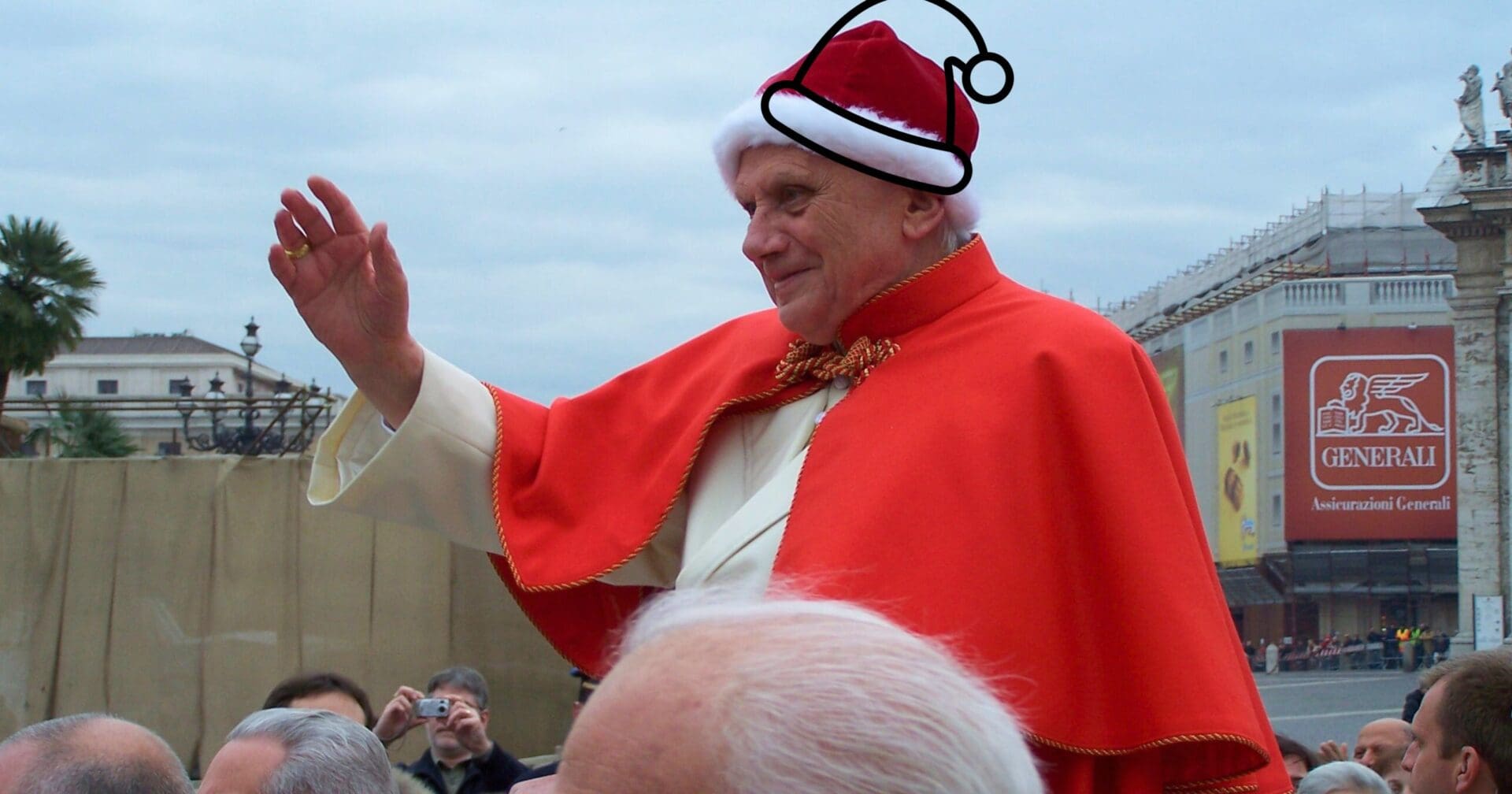The Santa hat, a beloved Christmas tradition worn by jolly old Saint Nick himself, has a rich history dating back centuries.
While it may seem like a modern invention, the origins of the red and white hat can actually be traced back to ancient Rome and the Catholic Church!
The evolution of the Santa hat can be traced through various cultural and historical influences, including the pileus and the Catholic camauro.
One of the earliest predecessors of the Santa hat was the pileus, a type of soft, brimless hat worn by ancient Romans. The pileus was typically made of felt and was often worn by freed slaves as a symbol of their newfound liberty. It was also commonly worn by Roman citizens as a casual, everyday hat. The pileus was typically red or white in color, and it is believed that these colors may have inspired the red and white stripes of the modern Santa hat.
Another possible influence on the Santa hat was the Catholic camauro, a type of hat worn by Catholic clergy during the Middle Ages. The camauro was a round, soft hat made of red velvet and lined with white fur. It was often worn during the winter months to keep the head warm and was sometimes adorned with a small crown or tassels. The camauro was traditionally worn by bishops and cardinals, but it was also occasionally worn by the pope.
One famous wearer of the camauro was Pope Benedict XVI, who was frequently seen sporting the hat during his papacy. A few days before Christmas, during the first year of his papacy, Pope Benedict XVI wore the red velvet cap adorned with ermine.
After a media uproar questioning why he revived a centuries-old papal tradition, he said:
“I wore it only once. I was just cold, and I happen to have a sensitive head. And I said, since the camauro is there, let’s put it on. But I was really just trying to fight off the cold.”
Over time, the pileus and the camauro began to evolve and merge into the modern Santa hat that we know today. The red and white colors were retained, and the hat became more pointed and conical in shape. The white fur lining was also incorporated, giving the hat a cozy and festive appearance. Today, the Santa hat is worn by people of all ages and backgrounds as a symbol of Christmas cheer and goodwill.
So the next time you put on your Santa hat and spread Christmas cheer, remember that you’re participating in a tradition with roots that go all the way back to ancient Rome and the Catholic Church. Whether you’re a fan of the pileus or the camauro, the Santa hat is a beloved symbol of the holiday season that has stood the test of time. Its evolution from ancient Rome through the Church to the present day is a testament to the enduring power of these cultural and historical traditions.
Photo credit: Ash Lux via Wikimedia Commons














